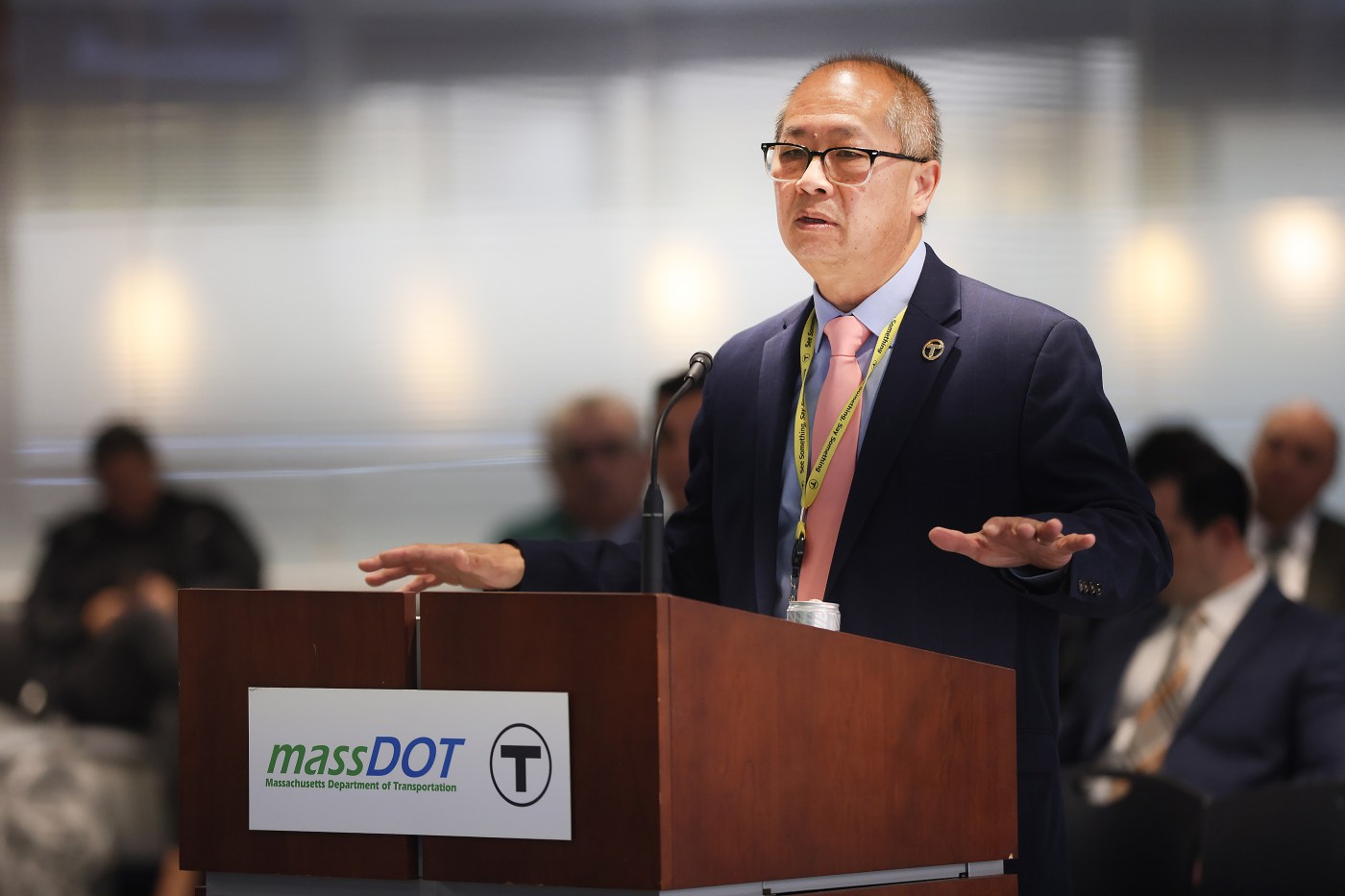
MBTA slow zone repair plan will require sporadic closures through 2024
It will take more than half a year of occasional closures, but if everything goes right there will be no speed restrictions on the MBTA by the end of 2024, according to a repair plan laid out by General Manager Phil Eng.
The GM, in a meeting with the beleaguered transportation network’s Board of Directors’ Safety, Health and Environment Subcommittee on Thursday, said that after 19 days of closures to end 2023, and 188 days of diversions in 2024, the 23% of MBTA tracks currently running under speed restrictions will be back to normal operations.
“We want to bring our trains back to full-maximum speed, thereby reducing those delays associated with slow speeds and disruptions due to track infrastructure needs,” he said. “We want to do this where we can start to deliver timely, reliable, consistent service that is not only serving the public that is using our system today but to be able to bring people back to the system.”
The plan calls for track repairs on all four subway lines — Red, Blue, Green and Orange — which Eng acknowledged would require further disruption for T riders who are already dealing with less-than-ideal circumstances. The diversions are “short-term pain for long-term wins” Eng said.
Across the whole system there are 191 speed restrictions. The Red and Green Lines have the most slow zones, at 69 and 66 respectively, while the Orange Line has 42 and the Blue Line 14.
The repairs would aim to remove those slow zones by replacing almost 150,000 feet of rail and over 31,000 ties. Completing the repairs will cumulatively return 86 minutes of travel time to riders currently taking restricted trains, according to the GM.
The plan — and the fact that it was announced to the public in advance — demonstrate both “a new way of doing business” at the MBTA, Eng said, and a recognition of how the system got to this point and how to avoid similar repair backlogs in the future.
“This goes to the years and years of disinvestment, this goes to the need to make sure that we find a way to, not only deliver on projects that will build for the future, but how do we ensure that we retain the significant resources needed to maintain that state of good repair,” Eng said.
Eng’s plan, according to Greater Boston Chamber of Commerce President & CEO Jim Rooney, is “a new and strategic MBTA commitment to important repairs necessary to eliminate slow zones that will bolster service for the region.”
“The detail, clear goals, and deadlines in the plan mark an encouraging — and much needed — shift towards greater transparency and accountability by the T. The Chamber continues to advocate for transparency and accountability to ensure that residents, workers, and employers understand how the T’s reliability and safety will be fixed and strengthened,” Rooney said.
The cost of repairs is already covered by the MBTA’s operating and maintenance budgets, Eng said.
“All of the work that we’re proposing here, is going to be funded within our existing dollars,” Eng said. “We will make sure that we fund this, because this is essential to be done.”
Herald wire service contributed.
MBTA workers replace tracks on the Green Line’s B branch last month. (Libby O’Neill/Boston Herald, File)


